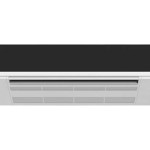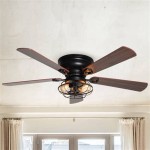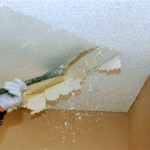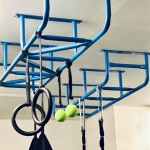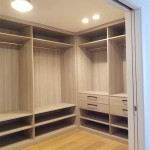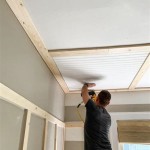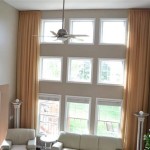Ceiling Fan Wobbles On High Speed: Causes and Solutions
A wobbling ceiling fan, particularly when operating at high speed, is a common household issue that can range from a minor annoyance to a potential safety hazard. This article provides an in-depth examination of the causes behind ceiling fan wobbles, focusing specifically on instances where the wobble is exacerbated at higher speeds. Additionally, we will explore various troubleshooting steps and solutions to rectify these issues and restore stable fan operation.
The phenomenon of increased wobble at high speeds indicates a dynamic imbalance. While a slight imbalance might be imperceptible at low speeds, the centrifugal forces at play during high-speed operation magnify even minor misalignments, leading to noticeable and potentially disruptive wobbling. Understanding the underlying reasons for these imbalances is crucial for effective troubleshooting.
Blade Imbalance and Alignment
One of the most frequent causes of ceiling fan wobble is an imbalance in the blades. This imbalance can stem from several factors. Firstly, variations in blade weight can occur due to manufacturing inconsistencies or environmental factors like humidity absorption. Even subtle differences in weight disrupt the rotational equilibrium, leading to wobble. Secondly, blade alignment is critical. If one or more blades are bent, warped, or not properly aligned with the others, the fan's center of gravity shifts, resulting in an uneven distribution of force during rotation. The faster the rotation, the more pronounced this effect becomes.
Addressing these blade-related issues requires careful inspection. Begin by visually inspecting each blade for any signs of bending, warping, or damage. Use a measuring tape to ensure that the distance from the blade tip to the ceiling is consistent for all blades. Significant variations in these measurements indicate misalignment. To check for weight imbalances, you can use a kitchen scale to weigh each blade individually. Differences in weight, even by a few grams, can contribute to wobble. If weight differences are identified, small adhesive weights (often included with ceiling fan installation kits or available separately) can be strategically applied to the lighter blades to compensate.
Correcting blade alignment issues may involve gently bending the affected blade back into its proper position. Exercise caution to avoid damaging the blade. Replacement blades can be purchased from the manufacturer or a reputable retailer if the damage is too severe to be corrected. When replacing blades, it is generally recommended to replace all blades simultaneously to ensure uniformity in weight and profile.
Furthermore, ensure that the blade holders are securely fastened to the motor housing. Loose screws or damaged blade holders can contribute to blade misalignment and exacerbate wobbling.
Motor Housing and Mounting Bracket Issues
The motor housing and mounting bracket are the structural backbone of the ceiling fan, and their stability is paramount for proper operation. If the motor housing is not securely attached to the mounting bracket, or if the mounting bracket itself is loose or improperly installed, the entire fan assembly can vibrate and wobble, particularly at high speeds. Similarly, the mounting bracket must be adequately secured to the ceiling joist. An insufficiently secured bracket allows for excessive movement, amplifying any existing imbalances within the fan.
To inspect the motor housing and mounting bracket, begin by turning off the power to the fan at the circuit breaker. This is a crucial safety precaution. Next, carefully examine the screws and bolts that connect the motor housing to the mounting bracket. Ensure that all fasteners are tightened securely. If any fasteners are missing or damaged, replace them with appropriately sized hardware. Check for any signs of damage or wear on the motor housing itself. Cracks or deformities in the housing can compromise its structural integrity and contribute to wobble.
Regarding the mounting bracket, verify that it is firmly attached to the ceiling joist. If the bracket is attached to only the drywall, it will likely not provide sufficient support. Use a stud finder to locate the ceiling joist and ensure that the mounting screws are securely anchored into the solid wood. If necessary, reinforce the mounting bracket by adding additional screws or using a larger mounting plate that spans across multiple joists. For heavier fans, consider using a specialized ceiling fan mounting brace designed to provide enhanced support. It is important to ensure that the electrical box is rated for the weight of the fan. Replacing the electrical box with one specifically designed for ceiling fans might be necessary.
Additionally, check the rubber or foam isolation pads (if present) between the mounting bracket and the ceiling. These pads help to dampen vibrations. If they are worn or compressed, they may need to be replaced. Replacing them can help to reduce noise and wobble.
Downrod Length and Ball Joint Issues
The downrod connects the ceiling fan motor to the mounting bracket and plays a crucial role in maintaining stability. The length of the downrod should be appropriate for the ceiling height. An excessively long or short downrod, or one that is not properly aligned, can contribute to wobble, especially at high speeds. Furthermore, the ball joint at the top of the downrod allows for some degree of movement and alignment, but if it is worn or damaged, it can introduce unwanted play and exacerbate wobbling.
To assess the downrod and ball joint, first ensure that the downrod is the correct length for your ceiling height. As a general guideline, there should be at least 7 feet of clearance between the floor and the fan blades. If the downrod is too short, the fan may be too close to the ceiling, restricting airflow and potentially causing the motor to overheat. If the downrod is too long, the fan may be too low, posing a safety hazard and potentially interfering with furniture or other objects.
Inspect the downrod for any signs of bending or damage. A bent downrod can throw the fan off balance and cause significant wobble. If the downrod is bent, it should be replaced. Next, check the ball joint for wear and tear. The ball joint should move freely within its socket, but it should not be excessively loose or exhibit any noticeable play. If the ball joint is worn or damaged, it should be replaced. Replacement ball joints are typically available from the fan manufacturer or a hardware store.
When installing the downrod, ensure that it is properly aligned and securely fastened to both the motor housing and the mounting bracket. Use the correct hardware and tighten all screws and bolts to the manufacturer's specifications. If the downrod has a locking pin, ensure that it is properly engaged to prevent the downrod from slipping or rotating.
Consider also the type of ceiling. Angled ceilings require a different type of installation and potentially a longer downrod to ensure proper clearance and prevent wobbling. A specialized angled ceiling adapter might be necessary.
In summary, a wobbling ceiling fan, especially at high speeds, is often the result of an imbalance or misalignment within the fan assembly. By systematically inspecting the blades, motor housing, mounting bracket, and downrod, and addressing any issues identified, it is often possible to eliminate the wobble and restore stable fan operation. If the wobble persists after performing these troubleshooting steps, it may be necessary to consult a qualified electrician or ceiling fan repair technician.

4 Ways To Stop Wobbling Ceiling Fan Lighting Singapore

How To Fix A Wobbly Ceiling Fan Lighting And Fans The Home

How To Fix A Wobbling Ceiling Fan Easy Step By Guide

How To Stop A Ceiling Fan From Wobbling

How To Fix A Ceiling Fan Wobble With Lights Youtube

How To Balance A Ceiling Fan The Home

How To Fix A Wobbly Ceiling Fan Hunter

How To Balance A Ceiling Fan Without Kit Fix Wobbling With Balancing

High Speed 600mm Cf Falling On Another Double Impact Wobble New Experiment

How To Fix A Wobbly Ceiling Fan Appliancepartspros Blog
See Also


